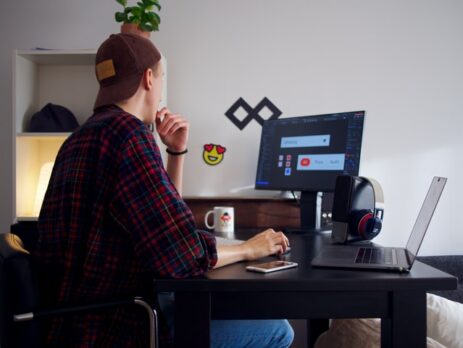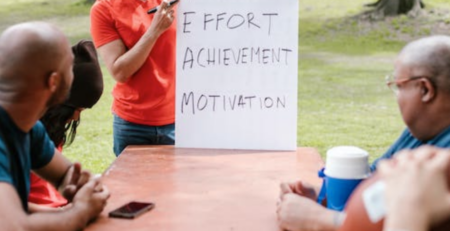Code Crafting: Hiring Strategies for Creative Programmers
The landscape of hiring in tech is ever-evolving, with an increasing emphasis on not just technical skills but also creativity and innovation. As companies strive to outpace competitors and delight users, finding and nurturing creative programmers becomes crucial. This article explores effective strategies for hiring creative programmers, who often bring a blend of technical prowess and artistic sensibility to their roles. A well-rounded hiring approach can help tap into a pool of talent that can think outside traditional frameworks and drive significant value through innovation.
Understanding the specific needs of creative programmers is the first step in crafting roles that attract this unique talent. These individuals often seek environments where they can experiment, learn, and grow. Therefore, a forward-thinking creative staffing agency can be pivotal in identifying candidates who are not only skilled but are also a good cultural fit for a company poised for innovation.

The traditional hiring processes may not be fully equipped to assess the creative potential of programmers. Thus, incorporating non-traditional elements into the interview process, such as hackathons, coding challenges that encourage creative problem-solving, and portfolio reviews, can provide deeper insights into a candidate’s capabilities and thinking process.
Moreover, the work environment plays a significant role in retaining creative programming talent. Fostering a culture that values creativity and continuous learning can encourage programmers to explore new ideas and push boundaries. This involves more than just offering competitive salaries and benefits; it requires building a supportive community, facilitating meaningful projects, and offering opportunities for personal and professional development.
In leveraging a creative staffing agency, companies can gain access to a broader network of creative talents, including those who might not be actively looking for new opportunities but are open to the right challenges. These agencies understand the nuances of matching creative minds with roles that require their specific skill sets and innovative potential.
It is also essential to consider the integration of technology in the hiring process. Tools and platforms that enable remote interviews, project collaborations, and digital portfolios can attract creative programmers who are often more comfortable in digital-native environments. This not only streamlines the hiring process but also appeals to tech-savvy candidates by meeting them in their element.
The evolution of team dynamics with the inclusion of creative programmers must also be managed. Existing teams may need training to embrace more creative methodologies or tools, enhancing collaboration and integration. The goal is to create a symbiotic relationship where both traditional and creative programmers can learn from each other and contribute effectively to projects.
Recognition and appreciation of creative work should not be underestimated in driving motivation. Engaging articles such as 10 Ways to Recognize Employees can provide managers with innovative ideas to reward and motivate their creative programming teams, thereby enhancing job satisfaction and loyalty.
Finally, the role of continuous feedback in the developmental journey of a creative programmer cannot be neglected. Tools and strategies that promote ongoing feedback, as discussed in Honest Feedback from Employees, can help in fine-tuning skills and maintaining the alignment of creative goals with business objectives.
By embracing these comprehensive strategies, companies can create a robust framework for hiring and nurturing creative programmers – a critical component in driving technological innovation and maintaining competitive advantage in the digital age.
FAQs about Hiring Strategies for Creative Programmers
1. What are key traits to look for in a creative programmer?
2. How does one effectively assess the creativity of programming candidates during interviews?
3. What type of work environment is most conducive to fostering creativity among programmers?
4. How can companies leverage technology to attract creative programming talent?
5. What role does a creative staffing agency play in finding creative programming talent?
6. How should teams be structured to include both traditional and creative programmers?
7. What are effective ways to retain and motivate creative programmers in the long term?
What are Key Traits to Look for in a Creative Programmer?
In scouting for a creative programmer, identifying distinct traits is crucial. Creativity in programming transcends basic coding skills; it includes a problem-solving aptitude, a passion for innovation, and an ability to think abstractly. Candidates should demonstrate a curiosity that drives them to explore new technologies and concepts actively. Versatility in using different programming languages and tools also indicates a capable and adaptable mind.
An essential trait is the resilience to overcome developmental challenges creatively. When presented with coding challenges during interviews, such as those suggested in managing remote teams, observe how the programmer approaches problems. Do they exhibit unique strategies, or do they follow conventional routes?
Communication is another critical trait; the ability to articulate complex ideas simply and clearly can signify a creative mindset. Engage candidates in discussions about projects depicted in their digital portfolios or ask them to explain a complex concept in layman terms during interviews. Their response can provide insights into their ability to synthesize and convey complex information effectively.
Team collaboration skills are also vital. Creative programmers should be able to brainstorm, receive feedback, and iterate on their work. Involvement in team projects or hackathons can be a good indicator of these skills. Inquiry about their roles in team settings during past projects can shed light on their collaboration and leadership qualities.
A desire for ongoing learning is crucial for keeping up with the fast-paced changes in technology. A candidate’s participation in continuous education, be it through courses, workshops, or self-study, will indicate a commitment to staying relevant and innovative.
Lastly, consider the candidate’s cultural fit within your organization. A programmer’s creative abilities will flourish in an environment that aligns with their values and supports their growth. Discussions about company culture and values, and observing the candidate’s response can help assess alignment.
Utilizing a detailed job description, as discussed in Hiring Manager Information, can attract candidates who not only fit the technical requirements of the role but are also aligned with the company’s creative culture and values. Furthermore, consider involving various team members in the hiring process to ensure a diverse range of perspectives when assessing a candidate’s fit and potential.
To sum up, looking for a blend of technical expertise, innovative problem-solving abilities, excellent communication, collaborative spirit, a drive for continual learning, and a good cultural fit will help in identifying a creative programmer who can contribute significantly to innovative projects and drive technological advancement.

How Does One Effectively Assess the Creativity of Programming Candidates During Interviews?
Assessing creativity during the hiring process requires a careful blend of structured and flexible approaches. Traditional interview questions that focus solely on technical competence are insufficient for gauging a programmer’s creative capabilities. Instead, integrating practical assessments can provide more profound insights into a candidate’s inventive thinking.
Start by incorporating problem-solving tasks that are open-ended. Challenges that allow multiple approaches can reveal the candidate’s thought process and originality. For example, instead of asking for a specific function to be coded, pose a scenario that needs a coding solution, and allow the candidate to devise the structure and code independently.
Use of portfolio reviews during interviews can be an excellent strategy to observe a candidate’s previous work. Encourage them to walk through their most creative projects. Discussions around the challenges faced and how they overcame them can yield insights into their creative thought processes and problem-solving skills.
Behavioral interview techniques can also uncover creative traits by exploring how the candidate has acted in past situations. Questions can be framed to reveal how they approached a complex project or innovated within constraints, which are critical data points for assessing creative capabilities. Learning about their passion projects or hobbies related to programming can also give cues about their intrinsic motivation towards creativity and innovation.
Including a practical coding session as part of the interview, possibly via a pair-programming setup with another developer, can demonstrate the candidate’s thinking and adaptability in real-time. Observing how they handle bugs or unusual project requirements can provide a direct insight into their creative aptitude.
Group interviews involving a brainstorming session can be another effective approach. Presenting a problem and asking the group to collaboratively find solutions can showcase how candidates contribute to, enhance, and guide creative group efforts. This also illustrates their ability to work in team settings, a crucial aspect of most programming jobs.
Utilizing psychometric tests designed to measure creative thinking and problem-solving skills can provide quantitative data to support subjective observations during interviews. These tests can help create a more comprehensive profile of a candidate’s creative capabilities.
Conducting reference checks can complement your assessment by providing external perspectives on the candidate’s past creative contributions and problem-solving skills. Discussions with previous colleagues or managers can relegate insights into their creative impact and collaboration style.
Finally, it’s essential to provide real-time feedback during these assessments. Offering candidates a chance to iterate on their work based on feedback showcases their ability to adapt and improve—key traits for a creative programmer.
Remember, a creative programmer’s potential can significantly influence your company’s innovation capabilities. Using diversified strategies during the interview process will help identify candidates who are not only technically adept but also bring a creative spark necessary for technological and business growth.
What Type of Work Environment is Most Conducive to Fostering Creativity Among Programmers?
Creative programmers thrive in environments that not only challenge their technical skills but also inspire their imaginative capabilities. Crafting such an environment involves several strategic elements, starting with the physical workspace. An open, comfortable, and resource-rich workspace encourages collaboration and free exchange of ideas, key components for fostering creativity.
Beyond physical space, the cultural atmosphere of a workplace plays a critical role. An environment that values risk-taking, supports experimentation, and doesn’t penalize failure encourages programmers to step outside their comfort zones and innovate. Incorporating flexible work policies including remote working can also attract top creative talent from around the globe.
It is also important to ensure that creative programmers have access to the latest tools and technologies. This not only facilitates their work but also inspires them to experiment and apply new methods or technologies creatively. Regular training and development opportunities to learn about emergent technologies or methodologies can further enhance their creative outputs.
Leadership style significantly affects creative output as well. Leaders who encourage autonomy and provide clear, inspiring visions can motivate programmers to tackle challenges creatively. Constructive feedback and recognition, as highlighted in 10 Ways to Recognize Employees, are crucial for sustaining creative engagement and satisfaction.
Team dynamics also influence the creative atmosphere. Teams that are diverse in terms of skills, experience, and perspectives tend to generate more innovative ideas. Encouraging interdisciplinary collaboration can open new avenues for creative problem-solving and innovation.
Moreover, implementing regular brainstorming sessions and dedicated time for creative pursuits within project schedules can provide programmers structured opportunities to innovate. Google’s famous ‘20% time’ policy, which allows employees to spend 20% of their time on projects they are passionate about, is an excellent example of this approach.
Finally, integrating customer feedback into the development process can provide programmers with insights and inspiration to think creatively about solutions to user problems. Engaging directly with end-users can spark innovative ideas and adjustments that significantly improve product offerings.
In summary, creating an environment that blends support for risk-taking, access to technologies, leadership inspiration, dynamic teams, and user interaction lays a strong foundation for stimulating and sustaining creativity among programmers.
How can Companies Leverage Technology to Attract Creative Programming Talent?
In today’s digital age, leveraging technology is key to attracting creative programming talent. Companies need to understand how innovative technologies not only facilitate the work of creative programmers but also serve as a magnet in attracting them.
Firstly, showcasing a commitment to using cutting-edge tools and platforms can make a company more appealing. Creative programmers often look for opportunities to work with the latest technologies which challenge them and broaden their skills. Highlighting the use of such technologies in job descriptions, on company websites, and during interviews can draw interest from top talent.
Utilizing virtual reality (VR) and augmented reality (AR) during the recruitment process can provide an immersive experience that speaks directly to tech-savish professionals. For instance, creating a VR tour of your office space or demonstrating through AR how a programmer’s work will impact the real world can be very engaging.
The use of AI in streamlining the application process can also be a significant draw. AI-driven systems that provide immediate feedback on applications, or personalized updates about the recruitment process, can create a favorable impression of the company’s efficiency and respect for candidates’ time.
Social media platforms are another powerful tech tool for attracting creative programmers. Engaging with potential candidates through platforms like GitHub, Stack Overflow, or even Instagram, where programmers share their work and follow technological trends, can help companies build relationships with talent long before the actual hiring phase begins.
Remote work technology also plays a critical role, especially in the post-pandemic work landscape. Providing robust tools for remote collaboration, flexible schedules, and the opportunity to work from anywhere can attract creative talent looking for a better work-life balance and a comfortable working environment.
Building an attractive online presence that resonates with tech-oriented professionals can significantly enhance a company’s appeal. This includes having an up-to-date, responsive website, active social media profiles, and engaging online content about projects and company culture.
Investing in employer branding that communicates a company’s commitment to innovation, technology, and creative problem-solving can also attract creative programmers. Articulate how creativity is valued within the company, showing real examples and case studies of innovative projects or products developed by the team.
Finally, maintaining a presence at tech conferences, hackathons, and workshops not only increases visibility among creative programming professionals but also demonstrates a company’s active engagement with the tech community. This involvement can attract candidates who are looking for dynamic and community-engaged employers.
In an industry where competition for top talent is fierce, the strategic use of technology in the recruitment and engagement process can set a company apart as a preferred employer for creative programming talent.

What Role Does a Creative Staffing Agency Play in Finding Creative Programming Talent?
The role of a creative staffing agency in the realm of hiring creative programmers is pivotal. These agencies specialize in bridging the gap between innovative companies and extraordinary talents, including those who might not be actively searching for new opportunities but are open to compelling offerings.
A creative staffing agency possesses a deep understanding of both the requirements of creative roles and the capabilities of potential candidates. This dual insight allows them to effectively screen and match individuals not only based on technical skills but also on creative prowess and cultural fit.’
Agencies typically maintain extensive networks of contacts and can reach passive candidates who are not actively looking but would consider a change for the right opportunity. They can act swiftly to connect you with these elusive talents, giving companies a competitive edge.’
The staffing process is enhanced by the agency’s robust selection methodology, which often includes specialized assessments and interviews to gauge a candidate’s creative and technical skills comprehensively. This can save companies considerable time and resources in the hiring process.’
Furthermore, a creative staffing agency can offer valuable market insights and advisory support to help companies understand the nuances of the creative talent landscape. They can inform effective hiring practices, compensation benchmarks, and even help with the structuring of roles and teams for optimal creative impact.’
For companies looking to fill short-term or project-based roles, these agencies provide flexibility by offering temporary or contract-based hires who can step in and contribute immediately to specific projects without the long-term overhead of a permanent placement.’
Their services also include ongoing support post-placement to ensure a smooth integration of creative talents into teams, helping to manage the change dynamics that can accompany new hires.’
By partnering with a creative staffing agency, companies can navigate the complexities of hiring highly specialized creative programming talent more effectively and efficiently, ensuring they find not just any candidate, but the right fit for their specific creative needs.’
In conclusion, a creative staffing agency plays a crucial role in the acquisition of creative programming talent, serving as an essential resource for companies seeking to innovate and compete in the evolving tech landscape.’
How Should Teams be Structured to Include both Traditional and Creative Programmers?
Integrating traditional and creative programmers within the same teams can pose challenges but also offers significant opportunities for innovation. The key to successful integration lies in structuring teams in a way that leverages the strengths of each type of programmer. Careful consideration of team dynamics, project management techniques, and leadership styles is crucial for fostering a productive and innovative team environment.
The first step is to define clear roles within the team that align with each member’s skills and interests. Traditional programmers may excel in implementing well-defined projects and maintaining systems, while creative programmers might be better suited for roles that require innovative thinking and problem-solving. Clarifying these roles from the beginning can help reduce conflicts and ensure a complementary workflow.’
Mixing skills within sub-teams can also be beneficial. Pairing a traditional programmer with a creative programmer on specific tasks can foster learning and idea exchange, leading to more comprehensive solutions. This can be particularly effective in projects requiring both stable systems and innovative features.’
Project management should accommodate different working styles. While some programmers may prefer a highly structured approach, creative types may thrive under more flexible conditions. Applying agile methodologies can provide the right balance, allowing for flexibility in problem-solving and regular reassessments of project directions.’
Leadership in these mixed teams should focus on clear communication, mutual respect, and the recognition of different viewpoints. Leaders should strive to create a collaborative environment where both traditional and creative programmers feel valued and understood.’
Encouraging open communication is essential. Regular team meetings should be held, where members can share ideas, feedback, and concerns. This openness can help blend the diverse perspectives and expertise within the team.’
Training and development opportunities should also be provided to all team members. This not only helps in upskilling but also in building a mutual understanding of various aspects of programming and technology. Workshops that focus on creative thinking, emerging technologies, or even soft skills can significantly enhance team capability and cohesion.
It’s important to celebrate and recognize the achievements of both traditional and creative programmers equally. This can help in building a culture of appreciation and motivation across the team. Implementing reward systems that acknowledge both innovation and reliability can cater to the diverse strengths within the team.
To facilitate successful integration and management of diverse talents, it’s useful to employ tools that support collaborative work, such as version control systems, integrated development environments (IDEs), and project management software. These tools can help streamline workflows and ensure that both traditional and creative programmers can work efficiently.
Finally, consider creating a feedback-rich environment. Constructive feedback, both from peers and leaders, can foster continuous improvement and personal growth. Engaging in regular review sessions and encouraging a culture of constructive criticism can help refine the team’s output and improve individual performances.
By following these strategies, organizations can successfully integrate traditional and creative programmers within the same teams, maximizing the potential for innovation while maintaining high efficiency and productivity in software development processes.
What are Effective Ways to Retain and Motivate Creative Programmers in the Long Term?
Retaining and motivating creative programmers requires an understanding of their unique needs and aspirations. Creative programmers typically seek environments where they can continuously learn, create, and influence meaningful projects. To ensure long-term retention and motivation, companies must develop strategies that address these desires effectively.
Firstly, provide opportunities for continuous learning and professional development. This could include access to the latest courses, certification programs, or sponsoring attendance at relevant conferences. For example, offering a budget for personal development can empower them to choose learning paths that suit their interests and career goals.
Creating a culture of innovation within the company is also crucial. Encouraging programmers to spend time on personal projects or new technologies, and integrating this into their work commitments can foster a sense of freedom and creativity. Google’s ‘20% time’ is a famous example, where employees can use a fifth of their working hours to work on company-related projects of their choice, which encourages innovation.
Acknowledgment and appreciation of creative work go a long way in motivating programmers. Implement a recognition system that celebrates both small victories and major milestones in creative projects. Details on effective recognition methods can be found in 10 Ways to Recognize Employees.
Offering competitive salaries and benefits is fundamental. Additionally, providing benefits that support a balanced life, like flexible working hours and the option to work remotely, acknowledges their need for a conducive working environment, thus fostering loyalty and satisfaction.
Involve them in goal setting and strategic planning for projects. When programmers feel their ideas and input are valued in critical decisions, it increases their engagement and commitment to the company.
Enhance their sense of ownership over their work by implementing policies that allow them to see their projects from inception to deployment. This can instill a sense of pride and accomplishment.
Encourage teamwork and community. Organize team-building activities not just within, but also across different teams. This fosters a sense of community and belonging, which is crucial for creative professionals who often rely on inspiration and the exchange of ideas.
Feedback is essential. Regular performance reviews, which incorporate constructive feedback and open dialogue about career progression, can help maintain motivation. This is well-discussed in Honest Feedback from Employees.
Finally, creating a physically and psychologically comfortable work environment is crucial. Ensure that the workspaces are ergonomically designed and that there is a culture of psychological safety, where creative programmers feel safe to express novel ideas without fear of judgment or failure.
By creating a supportive environment that focuses on growth, recognition, and satisfaction, companies can significantly enhance their ability to retain and motivate creative programmers for the long term.
Conclusion
In conclusion, hiring and nurturing creative programmers necessitates a multifaceted approach that goes beyond conventional recruitment strategies to tap into their unique skill sets and motivations. Companies must adapt by implementing creative hiring practices, fostering a supportive and innovative work environment, and leveraging technology to attract the best talents. In addition to the tactical aspects, cultural fit, continuous learning, and recognition play crucial roles in retaining and motivating creative programmers.
As technology evolves and becomes integral to almost every sector, the demand for programmers who can think creatively will continue to rise. Businesses need to be proactive in developing strategies that not only attract this kind of talent but also create an environment where they can thrive and innovate. The benefits of employing creative programmers extend beyond just their coding skills; they can lead to groundbreaking products, enhanced user experiences, and ultimately, a sustainable competitive advantage in the industry.
Through a detailed understanding of these professionals’ aspirations and the systematic application of recruitment and retention practices, companies can ensure they remain at the forefront of innovation. Employing the services of a creative staffing agency and adopting cutting-edge tools and methodologies are ways to nurture a culture that attracts and retains top programming talent. Additionally, by valuing creativity and fostering an environment conducive to innovation, businesses can leverage the full potential of their programming teams.
Whether through refined interview strategies, enhanced team dynamics, or strategic use of technologies, the goal remains consistent: to build teams that are not only skilled but are also inspired and motivated to push the boundaries of what’s possible with technology. This commitment to fostering creativity among programmers will provide the impetus for enduring success and innovation in any tech-oriented business.
For further insights into managing remote teams effectively, including creative programmers, refer to Tips for Managing a Remote Work Force. This guide provides invaluable advice for maintaining productivity and motivation among distributed teams, an increasingly relevant topic in today’s global workforce.
Ultimately, the blend of strategic hiring, supportive culture, and continuous development is key to nurturing a successful team of creative programmers. By prioritizing these elements, organizations can not only keep up with but also lead the wave of technological advancement and innovation.
The journey of integrating creative programmers into your team is an ongoing one, requiring constant adaptation and learning. Utilizing the resources provided by insight-driven staffing agencies and the wealth of knowledge available in the field will facilitate not just the hiring of these unique talents but also their integration and growth within your company.
In the rapidly evolving tech landscape, staying ahead means actively embracing the creative capacities of your workforce and continually refining your strategies to harness their potential fully. As you venture into this dynamic aspect of business, remember that the true measure of success in technology isn’t just in systems and software—it’s equally about the people who envision, develop, and revolutionize them.
In today’s competitive market, finding the right creative and marketing expert can be a challenge. But with icreatives, you’re in experienced hands. With 37 years in staffing and a track record of matching more than 10,000 employees to over 1,000 companies worldwide, we know how to connect you with the best. Plus, you only pay if you hire—there’s no risk, only results.Ready to find your perfect creative or marketing expert?
HIRE WITH ICREATIVES today!












